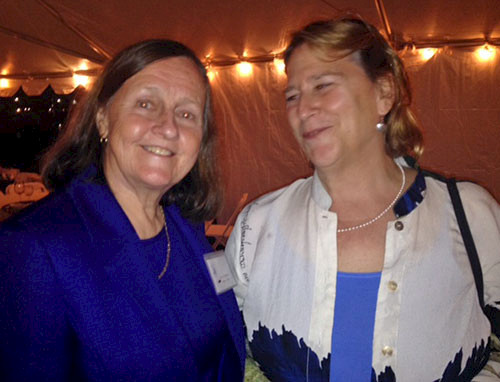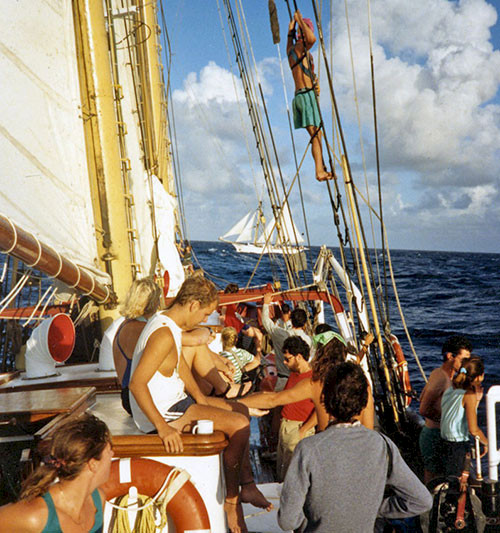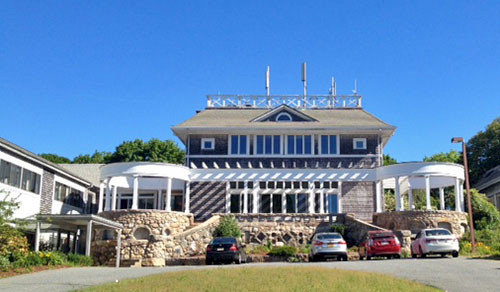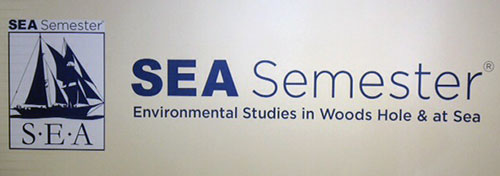A sea change at SEA: Sea Education Association takes its tall ships into uncharted waters
Bill Dennison ·I attended the annual trustees and overseers meeting of the Sea Education Association in Woods Hole, MA on 22-23 June. This was my first meeting in some time, so it was good to see everyone again and get an update on the progress of S.E.A. in transforming their program to accommodate the changing market for study abroad college students. The new S.E.A. President is Peg Brandon and the Chair of the Trustees is Susan Humphris. Peg was a ship captain and nautical science faculty and Susan was the Dean when I worked for S.E.A., so it was nice to see them in leadership roles. Since the Sea Semester students are predominately female these days, I think that it is quite appropriate to have female leadership.

The new cruise tracks are taking the SS/V Corwith Cramer and the SS/V Robert Seamans into new waters, including sailing into the heart of the Atlantic Ocean (Sargasso Sea), the heart of the Pacific Ocean (Phoenix and Line Islands), transoceanic voyages (to Europe and New Zealand), and to historic and iconic ports (e.g., Cork, Ireland and Cadiz, Spain). In addition, Dean Paul Joyce and his amazing faculty are actively developing new curricula and important partnerships with various conservation organizations and agencies. They are deploying the tall ships into areas not served by coastal vessels or other oceanographic vessels, thus the data they collect will be globally unique. This is a great use for these ships that use ancient sailing technologies, combined with modern scientific gear and techniques.
The S.E.A. faculty and staff maintain an incredible safety record, delivering quality experiential education for over forty years. I first sailed on an S.E.A. tall ship, R/V Westward, in 1977 (W-33) from Miami, to the Bahamas, Savannah, GA, up through Chesapeake Bay and down Delaware Bay to Woods Hole, MA. Since, then S.E.A. ships have logged over a million sea miles in both the Atlantic and Pacific Oceans. I returned to serve as Chief Scientist and was an occasional Visiting Scientist. I have written a paper and a book chapter about the value of immersive educational experiences, citing my Westward experiences as a student and teacher.

One of the great things to observe was the active and targeted marketing campaign by Katherine Enos and her staff. They are really getting the word out about Sea Semester through a variety of means. I was surprised to learn that in addition to social media and their website, they still get students through the posters and rip off cards placed on college campus billeting boards (which was how I learned about Sea Semester almost forty years ago!). Enrollments are up and the S.E.A. Treasurer Jake Brown was "Decidedly Hopeful", quite an improvement over the past several years.
The dinner was outside of the Swope Center, Marine Biological Laboratory, overlooking Eel Pond on a delightful evening. Some of the students in the current class about to head out to Hawaii to board the Seamans were invited to attend the after dinner talk by Greg Stone, Executive Vice President and Chief Scientist of Conservation International. We were running a bit late, so Jan Witting, one of the able faculty, grabbed the students and took them on an impromptu walking tour of downtown Woods Hole. This simple, thoughtful act by Jan saved an awkward period of students watching people eat and turned it into a nice educational event. After dinner, the students sat up front and hung on every word of the stimulating talk that Greg delivered, which he appropriately focused on the students in the audience. The long question and answer session was a testament to how Greg hit the mark, talking about the importance of marine protected areas, the need for good oceanic science to support marine conservation and the ocean health index.

The S.E.A. faculty have been busy mining some of the long term data sets that have accumulated over the years and have several recent well publicized papers, including telling the world about plastics in the sea. The faculty have also started working with new partners, bringing people together to use the ships and the data, which benefits the students who now have an audience of people who will use their findings. This is a 'game changer' and the students become energized and ultimately empowered by these partnerships, as S.E.A. becomes more relevant in the marine science and conservation realm.
After hearing about the incredible new programs and the challenges of sailing to new and distant locations, it occurred to me that the entire program, including students, staff, faculty and leadership, are sailing into uncharted waters, literally and figuratively. This is exciting, somewhat scary, but ultimately incredibly rewarding. I wish them fair winds on their journey and trust that they will continue to help form the next generation of ocean scholars, stewards and leaders.

About the author
Bill Dennison

Dr. Bill Dennison is a Professor of Marine Science and Vice President for Science Application at the University of Maryland Center for Environmental Science.

